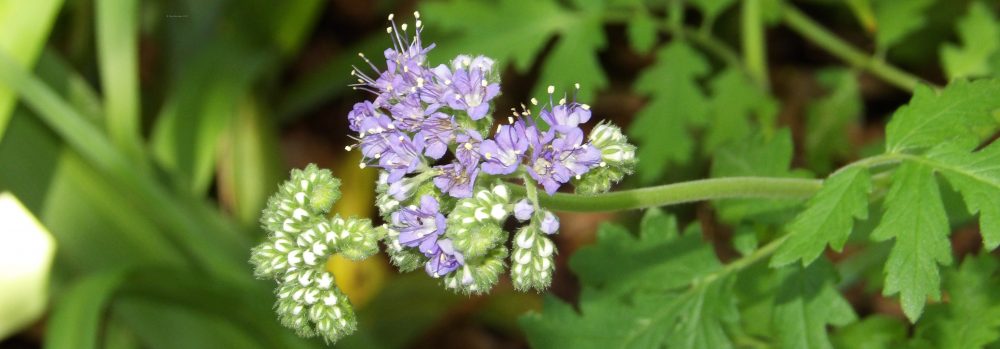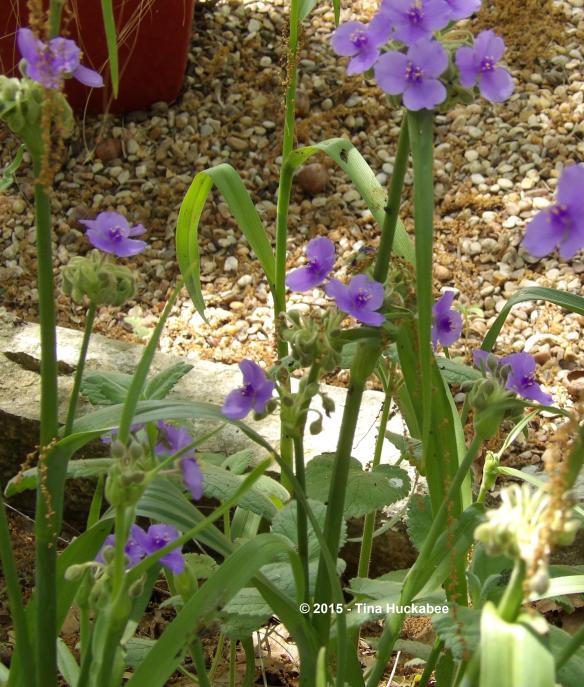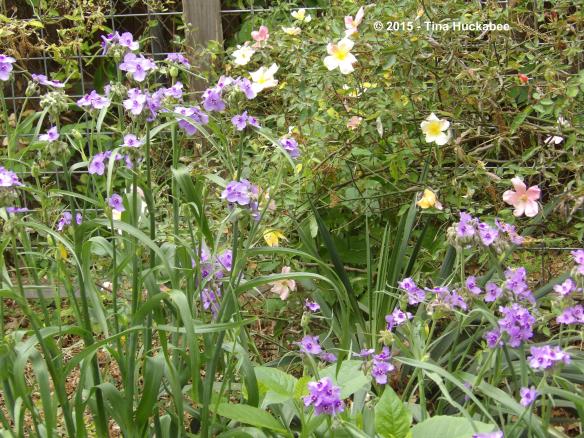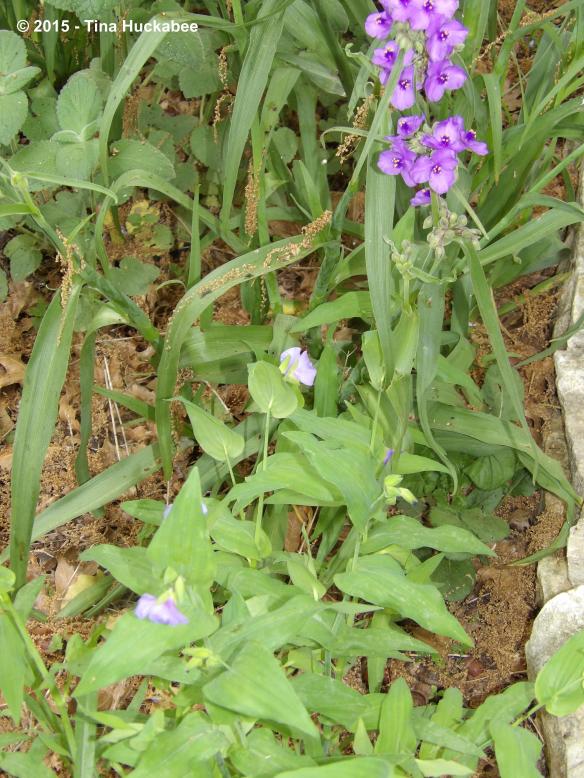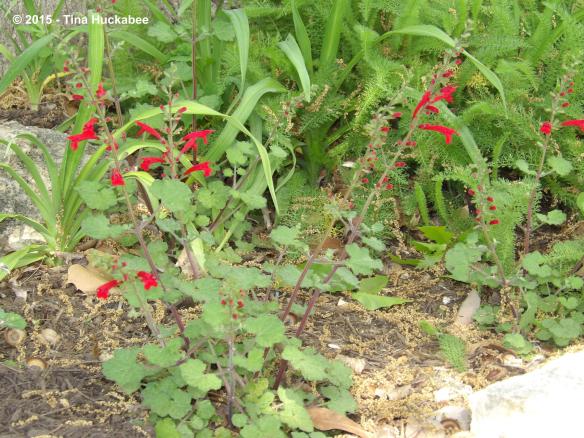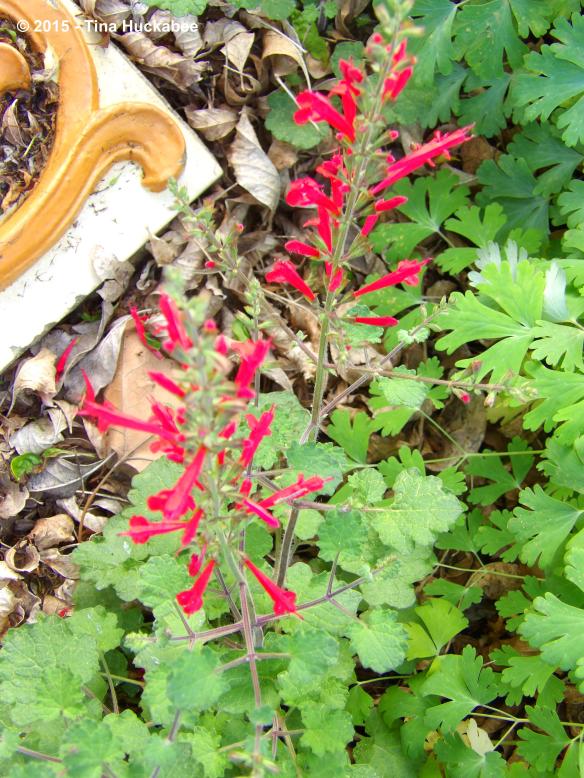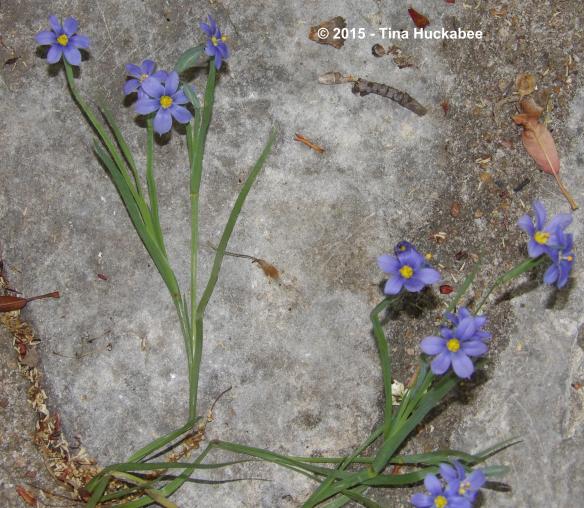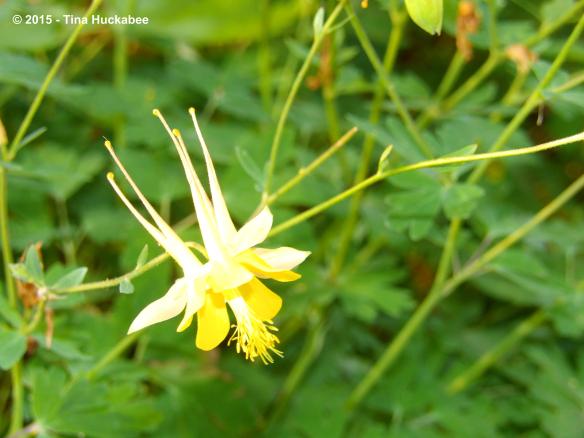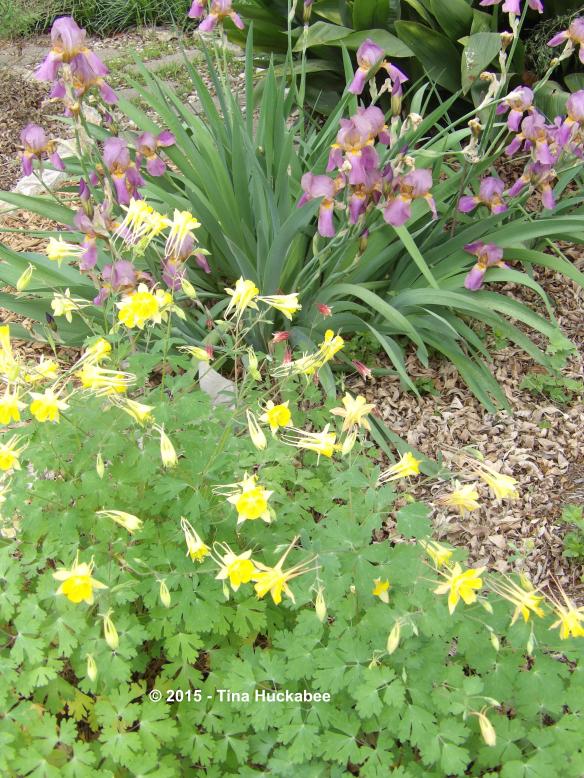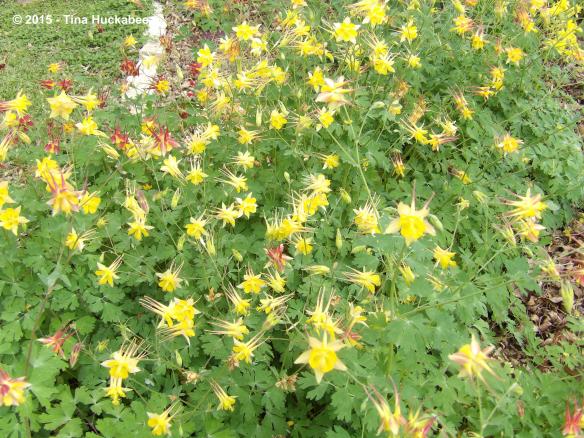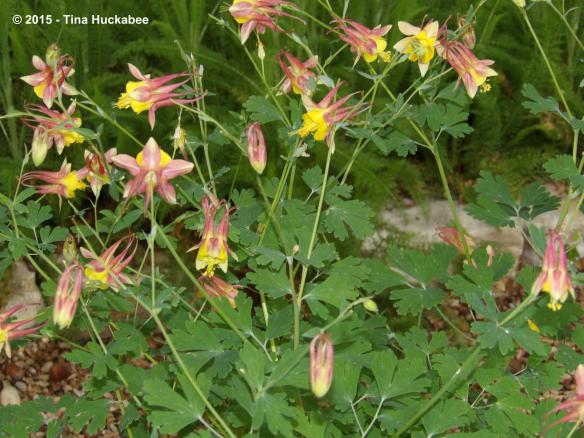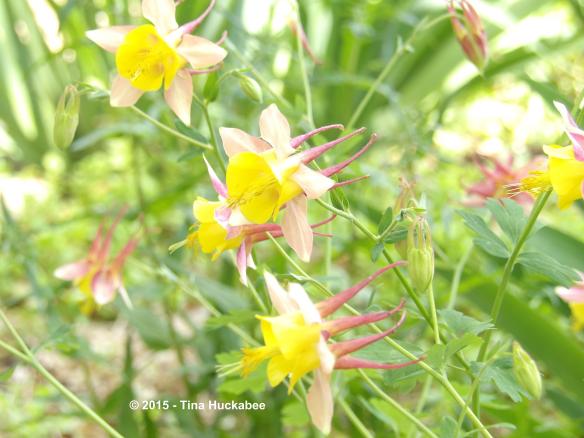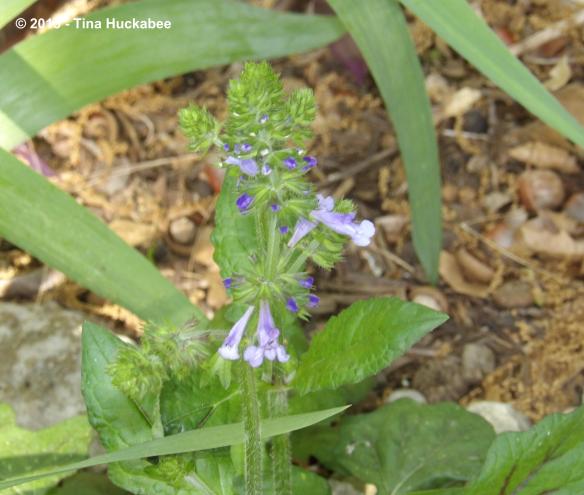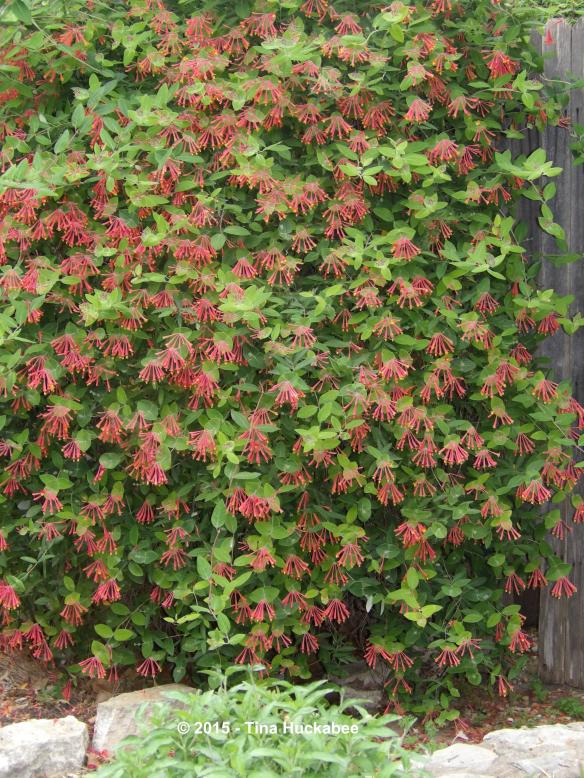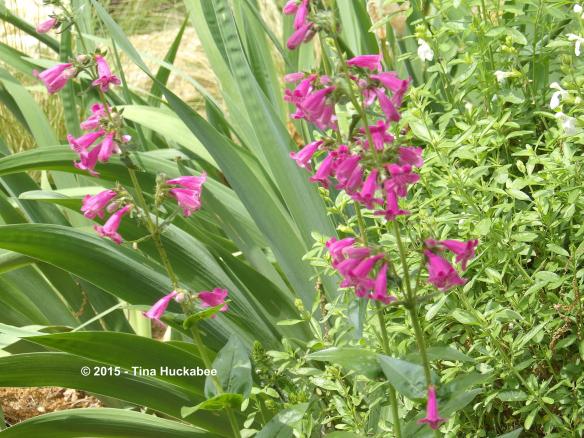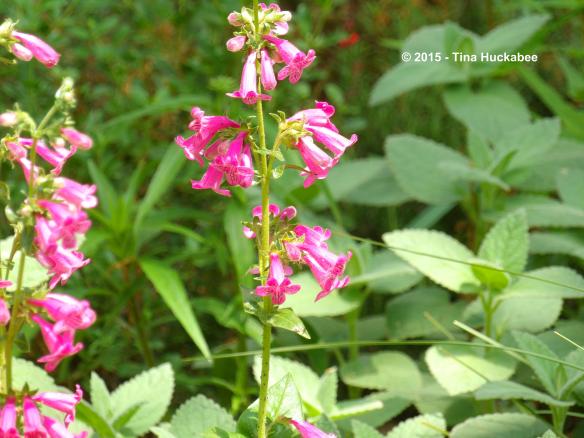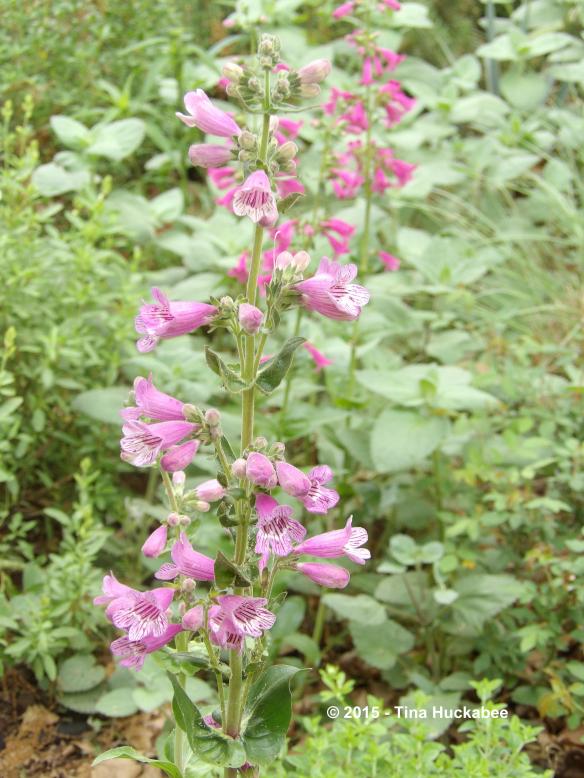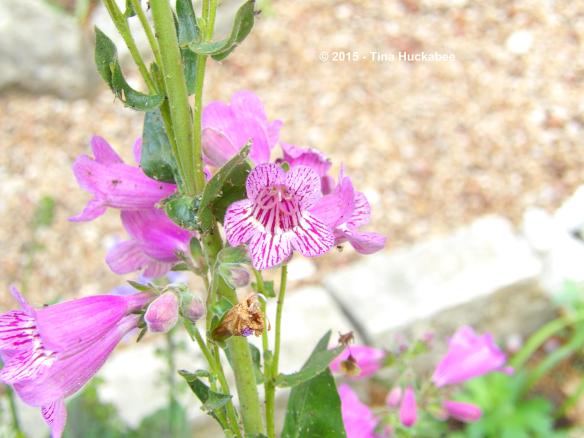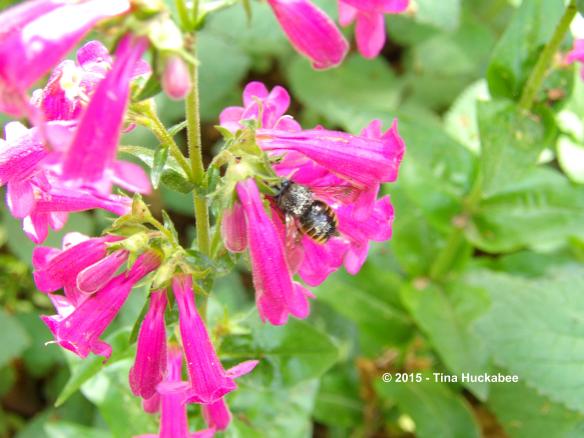Welcome to the April edition of Garden Bloggers’ Bloom Day, hosted by Carol of May Dreams Gardens. There are so many blooms in my April garden and so little time to profile all of the flowers, so I’ll focus on a few, mostly native Texas lovelies.
The purples have taken control of my gardens–holding the garden hostage with their beauty. Included in the violet-hued blooming coup are several varieties of non-native Iris and native Texas perennial wildflowers.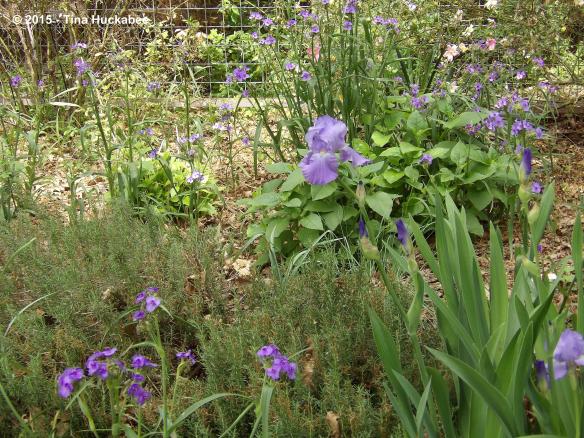
I have scads of Spiderwort, Tradescantia, ssp. clumps which have spread willy-nilly throughout my beds. They vary in size, color, and petal form, but all are pretty in purple and pollinator-attracting.
A relative of the Spiderwort, this dainty False Dayflower, Tinantia anomala, displays a delicate spring lilac.
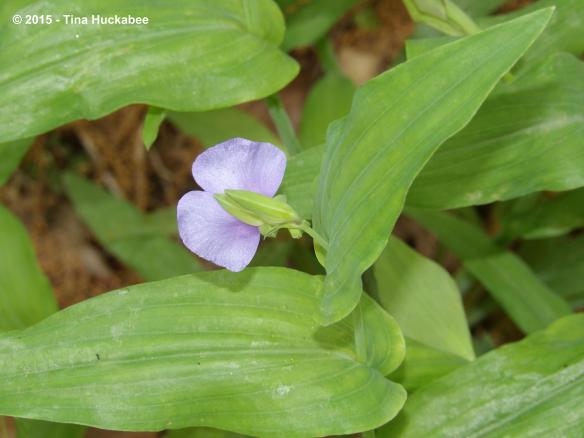 It’s a nice companion to the Spiderwort and like its taller kin, was a surprise gift in my garden.
It’s a nice companion to the Spiderwort and like its taller kin, was a surprise gift in my garden.
Cedar Sage, Salvia roemeriana, is a blast of red-hot gorgeousness in spring and is flowering a bit earlier than typical for this shade-loving perennial.
It’s certainly no shrinking salvia in the garden.
This darling Blue-eyed Grass, Sisyrinchium chilense, popped up in a crack in my patio and is blooming along just fine in its mortar mulch.
I’m only guessing at this identification–I didn’t buy it in either seed or container plant form. It’s definitely a blue-eyed beauty, though.
Native Texas Columbines are spring favorites. The Yellow Columbine, Aquilegia chrysantha var. hinckleyana,
…and the smaller, less flamboyant Wild Red Columbine, A. canadensis,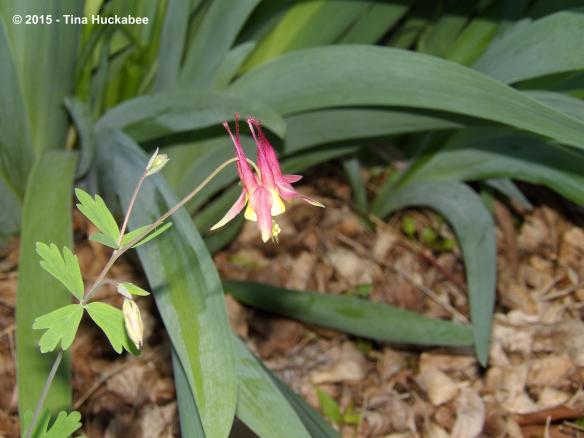
…and the natural hybrids of the two that occur when both are planted together over the course of a few seasons.
I love ’em all!
Lyreleaf Sage, Salvia lyrata, is at the peak of its beautiful spring blue flower spikes. Or is the color purple? Or maybe more of a lavender? Whatever it is, it’s welcome in my garden.
Lyreleaf Sage is a good choice for a shade-tolerant ground cover and is attractive year-round.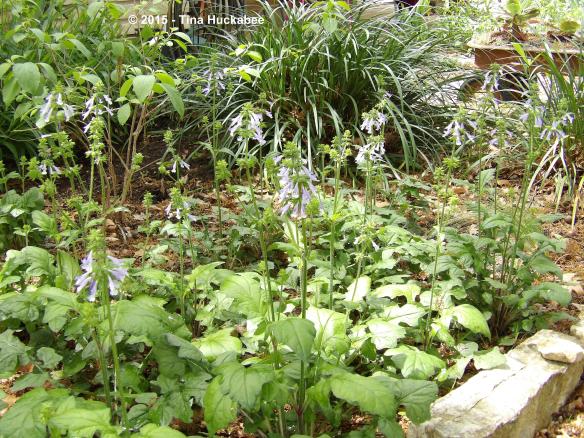
Coral Honeysuckle vine, Lonicera sempervirens, is a blooming monstrosity!
But no one can doubt the beauty and pollinator zing it adds to a garden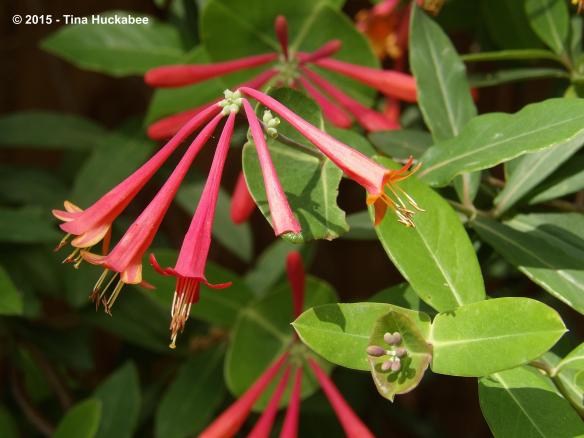
Hill Country Penstemon, Penstemon triflorus, stands as s a fuchsia sentinel in my early and mid-spring garden.
This one is perhaps a hybrid between the P. triflorus and P. cobaea. The tag at the Lady Bird Johnson Wildflower Center was labeled P. triflorus, but it’s never quite looked like my others. It sports larger blooms and foliage in an overall taller plant, plus the coloring is variegated.
Nonetheless, like my other Hill Country Penstemon plants, I appreciate its good looks, long flowering time, and purpose as an excellent pollinator plant.
Not native to Central Texas but instead, to West Texas and New Mexico is the Globe Mallow, Sphaeralcea ambigua.
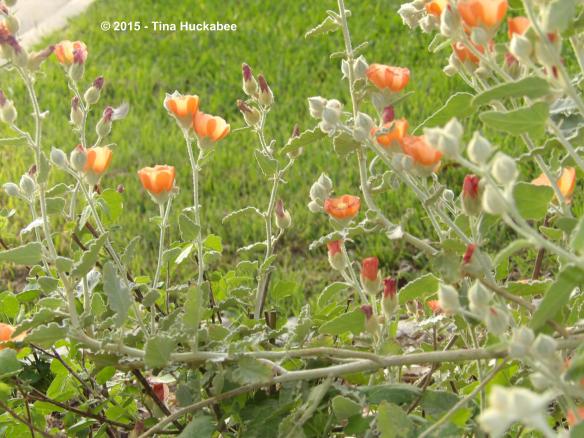 Hot, dry, and sunny makes this mallow happy and I’m glad I have ONE spot that it’s happy in. Doesn’t it look happy to you?
Hot, dry, and sunny makes this mallow happy and I’m glad I have ONE spot that it’s happy in. Doesn’t it look happy to you?
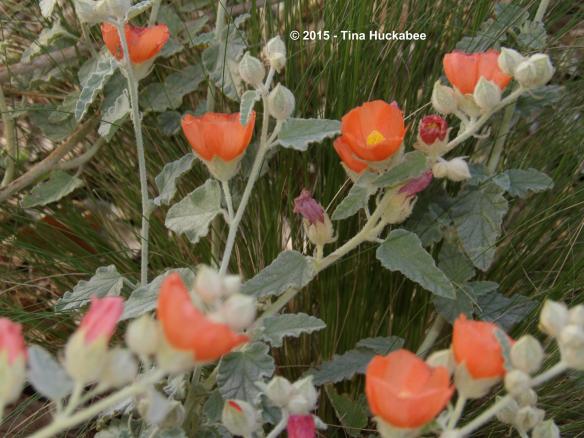 Happy April GBBD–check out other gorgeous April bloom happenings at May Dreams Gardens.
Happy April GBBD–check out other gorgeous April bloom happenings at May Dreams Gardens.
